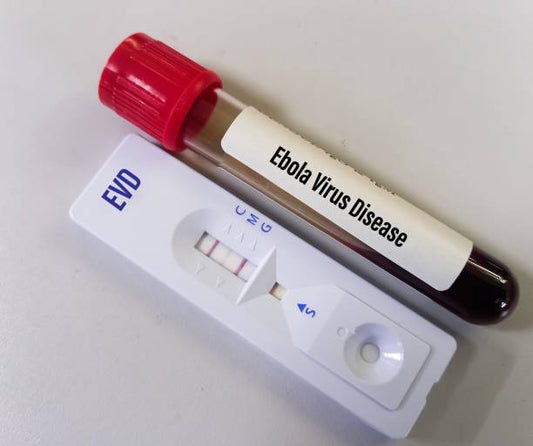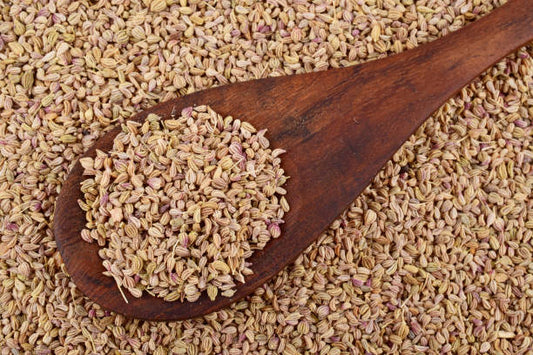We all have seen this word on chocolates, on bread packets, on icecreams and so many items that we consume on a regular basis. But have you wondered what is an emulsifier, how does it work and whether its vegan or vegetarian?
What are Emulsifiers?
Emulsifiers are molecules that help to stabilize mixtures of two liquid substances that would otherwise separate. They have the ability to bind water and oils together to create emulsions, which are mixtures that have a creamy, smooth texture. Emulsifiers are essentially surfactants, which are molecules with a hydrophobic end (which repels water) and a hydrophilic end (which attracts water).
This unique property of emulsifiers allows them to act as a bridge between droplets of water or oil particles in an emulsion, allowing the two substances to remain mixed and stable. Some common emulsifiers used in food and cosmetics include lecithin, glycerol monostearate, and polysorbates.

How do emulsifiers work?
Emulsifiers work by reducing the surface tension between two immiscible substances, such as oil and water, allowing them to mix together and form a stable emulsion. This is achieved by having one end of the emulsifier molecule attracted to water and the other end attracted to oil. The emulsifier molecules form a layer around the dispersed droplets, preventing them from coalescing and separating out over time. This creates a stable mixture of the two substances, such as an oil-in-water or water-in-oil emulsion, which can be used in a variety of products.
Is emulsifier vegan?
It depends on the specific emulsifier. Some emulsifiers are derived from animal sources, while others are plant-based. For example, lecithin can be derived from soybeans or egg yolks, but the majority of commercial lecithin is derived from soybeans. Emulsifier E471 is usually made from vegetable oils and is therefore considered vegan. Emulsifier E476 (polyglycerol polyricinoleate) is derived from castor oil and is also considered vegan. However, emulsifier E442 (ammonium phosphatide) is derived from fatty acids found in animals and plants, making it unsuitable for vegans.
Products that contains Emulsifiers (442, 471, 476)
5 Star Chocolate , Bournvita Lil Champs
There are many food products that may contain emulsifiers, including:
- Bread and baked goods
- Dairy products such as ice cream, yogurt, and cheese
- Chocolate and other confectionery products
- Salad dressings and sauces
- Processed meats and sausages
- Margarine and other spreads
- Nut butters
- Non-dairy milk alternatives
- Desserts and puddings
- Mayonnaise and other condiments
Uses of Emulsifiers
Emulsifiers have various uses in a range of industries, including food, cosmetics, pharmaceuticals, and agriculture. These uses include improving texture, stability, and appearance of products, preventing separation of ingredients, increasing shelf life, and enhancing flavor and aroma. Emulsifiers are also used in the production of many processed foods, such as baked goods, spreads, dressings, and beverages, as well as in the manufacturing of cosmetics, creams, and lotions. Additionally, emulsifiers are used in the production of agrochemicals and crop protection products, where they help to improve the performance and effectiveness of these products.
Emulsifiers in Bread
Emulsifiers are commonly used in bread to improve its texture and shelf life. As little as 0.5% emulsifier added to the dough is enough to achieve an enhanced volume, a softer crumb structure, and a longer shelf-life.

Emulsifiers in Chocolate
All chocolate products contain 0.5% of lecithin (E 322) or ammonium phosphatide (E 442). These emulsifiers are added to provide the right consistency of the chocolate, so it can be molded into plates of chocolate, chocolate bars, etc. Sorbitan tristearate (E 492) can also delay the development of bloom, which makes the product less attractive to the customer.

Emulsifiers in Ice-cream
Emulsifiers are added during the freezing process of ice cream to promote a smoother texture and ensure the ice cream does not melt rapidly after serving. They also improve freeze-thaw stability. Mono and diglycerides of fatty acids (E 471), lecithin (E 322), and polysorbates (E 432, E 436) are commonly used in ice cream production. The same applies to other desserts such as sorbet, milkshake, frozen mousse, and frozen yogurt.

Are emulsifiers safe to consume?
The safety of emulsifiers is a complex issue, and it depends on factors such as the type of emulsifier, the dosage, and the individual's sensitivity or health conditions. Some emulsifiers are generally recognized as safe (GRAS) by regulatory agencies such as the US Food and Drug Administration (FDA) when used within certain limits. However, some studies suggest that certain emulsifiers may have negative effects on gut health and potentially contribute to chronic diseases such as obesity and inflammatory bowel disease.
How are emulsifiers regulated by food authorities?
Emulsifiers are regulated by food authorities such as the US Food and Drug Administration (FDA) and the European Food Safety Authority (EFSA). In general, emulsifiers are considered safe for consumption at levels approved by these authorities.
The FDA evaluates the safety of food additives including emulsifiers before they are approved for use in food products. The EFSA also assesses the safety of food additives used in the European Union.
In some cases, the use of certain emulsifiers may be restricted or banned. For example, the use of diacetyl tartaric acid esters of mono- and diglycerides (DATEM) and azodicarbonamide (ADA) as food additives is not allowed in some countries.
Overall, the safety of emulsifiers is continuously reviewed and monitored by food authorities to ensure that they do not pose any significant health risks to consumers.
Can emulsifiers cause allergic reactions?
Yes, some emulsifiers can cause allergic reactions in individuals who are sensitive to them. Common symptoms of an allergic reaction to emulsifiers include hives, itching, swelling, difficulty breathing, and anaphylaxis in severe cases. People who have a history of food allergies or sensitivities should be cautious when consuming foods that contain emulsifiers and consult with a healthcare provider if they experience any adverse reactions.
Can emulsifiers affect the texture and taste of food products?
What is emulsifier 442 ?
Emulsifier 442 is an emulsifier used in chocolate to help prevent the cocoa butter and powder from separating. It also improves the mouth feel and texture of the chocolate (which is the role of cacao butter in higher quality chocolate). It takes 10 times the amount of cacao butter to have the same effect as E442.
What is emulsifier 471 ?
Permitted Emulsifier & Stabilizer (INS 471) is widely used as an anti-staling agent in baked goods, such as bread, cakes, muffins and pies. It can also be found in potato chips, dessert toppings, custard powder, margarine spreads, and ice cream. It helps ice cream and whipped cream to have a smooth texture.
What is emulsifier 476 ?
Emulsifier 476, also known as polyglycerol polyricinoleate (PGPR), is an emulsifier made from fatty acids and glycerol. It is commonly used in the food industry as an emulsifier for chocolate and baked goods. In chocolate, PGPR is used to replace some of the cocoa butter and improve the flow properties of chocolate during production. It also helps to reduce the viscosity of chocolate, making it easier to work with. In baked goods, PGPR can be used as an emulsifier and a texturizer to improve the texture and shelf life of products.
Types of Emulsifiers and Their Applications
Emulsifiers are substances that help to stabilize mixtures of two liquid substances that would otherwise separate. They have a wide range of applications in the food, cosmetic, and pharmaceutical industries. Here are some common types of emulsifiers and their applications:
- Lecithin: This emulsifier is derived from soybeans and egg yolks and is commonly used in chocolate, baked goods, and margarine. It is also used in the cosmetic industry as an ingredient in lotions and creams.- Glycerol monostearate: This emulsifier is commonly used in the production of ice cream, whipped cream, and baked goods. It helps to improve texture, stability, and volume in these products.
- Polysorbates: These emulsifiers are a group of compounds that are commonly used in the pharmaceutical industry to solubilize drugs. They are also used in the production of baked goods, frozen desserts, and sauces.
- Mono and diglycerides: These emulsifiers are commonly used in the production of baked goods, dairy products, and margarine. They help to improve texture, stability, and volume in these products.
- Sorbitan esters: These emulsifiers are commonly used in the production of chocolate, margarine, and baked goods. They help to improve texture and stability in these products.
- Polyglycerol esters of fatty acids: These emulsifiers are commonly used in the production of bread, cakes, and other baked goods. They help to improve texture, stability, and volume in these products.
Overall, emulsifiers play an important role in the food, cosmetic, and pharmaceutical industries by helping to stabilize mixtures of two liquid substances that would otherwise separate. By understanding the different types of emulsifiers and their applications, manufacturers can improve the quality, texture, and stability of their products.
Trans Fat: The Hidden Danger of Hydrogenated Oil in Your Food
What is Invert Sugar? - Information and uses
Reference
EFSA. (2021). Emulsifiers. Retrieved from https://www.efsa.europa.eu/en/topics/topic/emulsifiersAuthor: Nikita Vishnoi BCA












